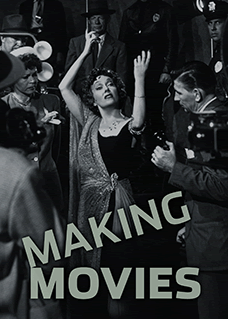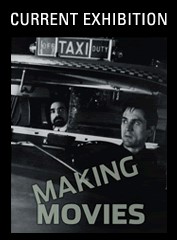Making Movies Exhibition at Harry Ransom
- Chickster

- Jun 4, 2010
- 2 min read
By Shelby
When it comes to finding new things to do around town, free is good, and free and fun is even better. Despite spending four years trekking across the University of Texas campus, I only went to the Harry Ransom Center once, and it was under such heavy construction at the time that I remember more about walking on plywood gangplanks surrounded by the sound of jackhammers than I do about looking at some early handwritten drafts Tennessee Williams had done of A Streetcar Named Desire.
The Harry Ransom Center completed its renovation years ago, but it wasn’t until its latest free exhibition that I finally made my way over to check it out. Making Movies runs through Aug. 1, so you’ve still got some time to see it. Now is the perfect time because (a) air-conditioning in museums is always nice, and (b) the exhibition actually serves as a perfect complement to the slate of classic films now playing as part of the Paramount Theater’s Summer Film Series.
Comprised largely of the collections of uber-producer David O. Selznick, prolific screenwriter Ernest Lehman and a little known actor called Robert De Niro, Making Movies sheds light on every aspect of film production, from art direction and costume design to the role of the producer or the composer to the script, through photographs, documents, memos, screenplays, letters, storyboards, set models, costumes and more.
As a classic film junkie, seeing storyboards hand drawn by Alfred Hitchcock for Rebecca or Ernest Lehman’s notes for the climactic chase scene in North By Northwest scrawled all over a visitor’s guide for Mt. Rushmore or photos of Vivien Leigh’s make-up test for Gone With the Wind were riveting windows into the past. No matter if your movie taste favors classics like Sunset Boulevard or neo-classics like Top Gun and Casino, you’ll find some piece of movie history that gives you more of an insight into how intensely detailed the filmmaking process is. And you’ll see just how far Hollywood has come after taking a look at the Production Code’s list of banned words from the 1930s. Who would have guessed that you couldn’t call women “hot” in a screenplay back then? (The distinction was only made for women in the code, so I guess you could have gotten away with referring to a character played by Clark Gable as hot without a problem.) My favorite part of the exhibition was a charming and cheeky letter to “The Sound of Music” director Robert Wise from actor Christopher Plummer detailing his thoughts on the characterization of Captain Von Trapp that revealed a big surprise: he hated the song “Edelweiss”!





Comments